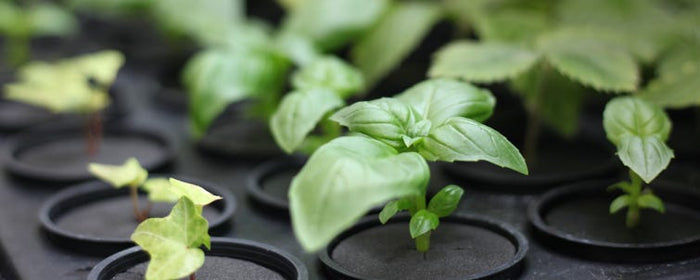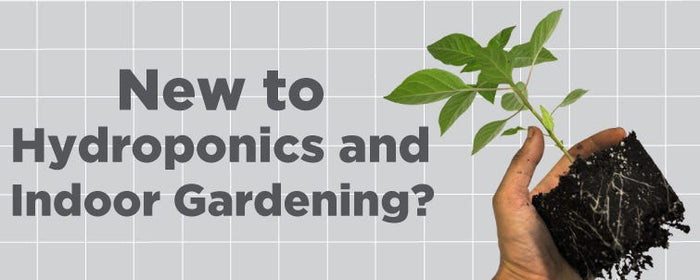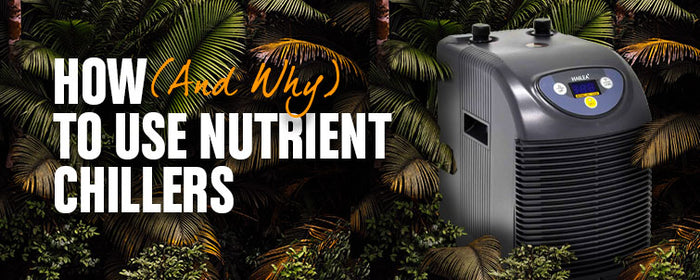![[Plant Pot Dynamics] Shape, Sizes, Material](http://www.growell.co.uk/cdn/shop/articles/plant-pot-dynamics--the-impact-of-different-shapes_-sizes-and-materials.jpg?v=1673371484&width=1100)
[Plant Pot Dynamics] Shape, Sizes, Material
Just for one moment imagine that you've been given an empty space to grow some plants using pots and your favourite medium. In order to achieve the best possible results, what size of container should you select? Both the shape and capacity of a plant pot can influence how a plant develops, and by no means does bigger always mean better! Discover more and learn how to pick out the right type of pots!
Growing in Pots - The Basics
'Potting up' (also known as 'potting on' and 'transplanting') either involves putting a plant into a proper container for the very first time or moving one on from an existing container to a bigger container. It is a long-established gardening practice – but why exactly? What does it achieve? Here’s a little reminder for you:
- Firstly, the process of potting up helps you to avoid over-saturating the growing media. Your nutrient solutions can spread over a larger surface area, so roots and their immediate surroundings aren't left soaking wet for prolonged periods of time. Otherwise, you would inevitably face issues relating to rot.
TOP TIP: did you know that the AquaZen Slow Water formulation in SHOGUN Samurai Coco Nutrients will actually aid the flow of nutrient solutions across your chosen growing media? This massively improves the distribution of key elements and makes them available to plants for longer periods of time.
- Secondly, it enables a good root system to grow throughout the entire plant pot. Sticking with a small container is guaranteed to limit the future progression of your plant because roots simply run out of available space. By giving them a greater freedom to roam and the opportunity to seek out more nutrients and water, you're able to actively encourage development.
As a result of potting up, your plants can grow in a faster, healthier and more effective manner than if they were confined to just one small size of container.
Are there any drawbacks to putting a small plant straight into a large pot?
Obviously the opposite approach to keeping a developing plant in a compact pot is to quickly let it loose on a much larger one, but this also promises to cause problems! Roots are very direct, racing out towards the edges of the container rather than distributing equally across the entire area. When they fail to penetrate the wall of a plastic or ceramic container, circling starts to happen – ultimately wasting energy and making poor use of the growing media.
A careful and considered strategy for potting up will give roots the opportunity to branch out at each of the stages a new container is introduced, leading to a far more impressive and productive rootzone.

Over Potting
Good Practice
Growing in RhizoPots
Potting up with RhizoPots is still necessary to prevent your growing media from becoming damp and stagnant. However, only 2 potting up stages are required (rather than the usual 3 or 4).
1.) To begin with you should use Propagation RhizoPots. These have been designed to accommodate propagation plugs/cubes and let you air-prune roots from the earliest stages of a plant's life, which lays the foundations for a complex root structure.

2.) Then transplant each Propagation RhizoPot straight into a final RhizoPot. The roots grow through the sides of the Propagation RhizoPot with ease and continue to air prune at the edges of the larger container.
Pot Size
As you can tell from what has been discussed so far, size clearly matters! Small pots often restrict growth in the long term whilst huge pots are often a waste of resources and space. A good rule to follow is outlined below:
The Rule
Use 50-60 litres of growing media per 600 Watt of light (covering 1-1.2m2).

Pot Shape
A lot of people believe that the shape of a container has a big impact upon drainage (one of the most important factors to consider if you're going to grow in pots). However, it is the properties of the growing media that will ultimately determine how easily nutrient solutions pass through the container and the resulting zone of saturation at the base - known as the ‘perched water table’.
Perched Water Table
Water is not distributed evenly throughout a pot. Adhesion, cohesion, and capillary action attract water to particles and resist gravity. The ability of the growing media to ‘hold’ water through adhesion and cohesion has been dubbed the ‘matric potential’. It is the same throughout the container.
Gravity pulls water down through the container and out of the drainage holes. While gravity is constant throughout the container, ‘gravitational potential’ registers higher at the top of the container and lower at the bottom.
Due to the gradual decrease in gravitational potential towards the bottom of the container, matric potential can be deemed greater the further down you go, where media particles are able to hold more water. This causes the formation of a perched water table – otherwise known as a layer of saturation – at the bottom of the pot.

Container height affects the relative amount of water versus air. With the same media, the perched water table occurs at the same height, irrespective of the container size. Short containers will have the same perched water table as large containers, thus a greater percentage of container volume is filled with water.
Clay Pebbles And The Perched Water Table
A lot of growers add clay pebbles to the bottom of pots for ‘improved drainage’. Based on the principles of the perched water table, and how the growing media ‘holds’ water, does adding pebbles to improve drainage actually work? More often than not, very little improvement in drainage is achieved – the pebbles just raise the perched water table.

So why add clay pebbles? Well, they’re really useful for the following reasons:
- As an insulating barrier for cold floors
- To prevent run-off from being sucked back into the media by capillary action (so you have more time to empty saucers)
- For RhizoPots used in saucers (using a RhizoSystem and putting them on RhizoStands is recommended)
What is the ideal pot shape?
To identify the optimum shape of pot, you first need to take into account your specific circumstances (e.g. the choice of growing system, media, etc).
Typically, for the broadest use (from hand-watering to drip irrigation) you should opt for Pot A.
Why are RhizoPots shorter and more squat than most plastic pots?
Thanks to the fabric material allowing for a faster drying process, the shorter and wider shape of RhizoPots can accommodate higher overall water retention and offset any associated issues (unlike Air-Pots up to the 15L model).
What if someone wants a container that allows the media to hold more water?
When you want higher overall water retention, choose Pot B (e.g. an AquaTray). This is commonly used in drip irrigation systems with rockwool slabs – a growing media that boasts great properties regarding air space and capillary action.








